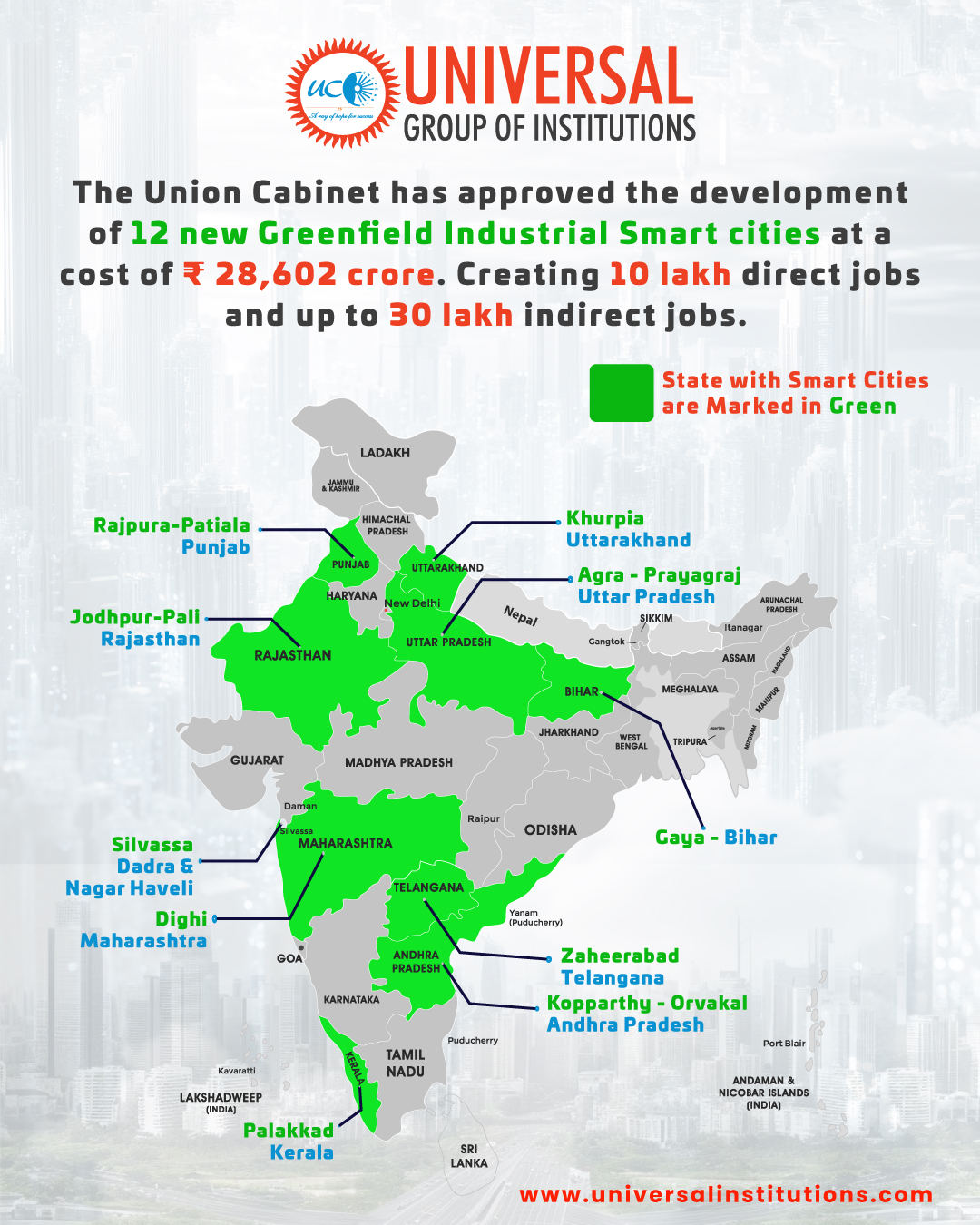“INDIA’S GREENFIELD CORRIDORS AND THE NATIONAL INDUSTRIAL CORRIDOR DEVELOPMENT PROGRAMME: PAVING THE WAY FOR ECONOMIC GROWTH AND EMPLOYMENT”
Why in the News?
Greenfield corridors, built on undeveloped land, offer modern, ready-to-use facilities (plug & play) and reduce commuting (walk-to-work). These corridors drive economic growth, job creation, and sustainable development, ensuring balanced regional development and advanced infrastructure, aligning with initiatives like ‘Make in India’ and the ‘Smart Cities Mission.
source: universalinstitutions
Key Points:
- Union Minister Ashwini Vaishnaw announced plans to develop 12 industrial smart cities across 10 states, strategically located along six major industrial corridors: Amritsar-Kolkata, Delhi-Mumbai, Vizag-Chennai, Hyderabad-Bengaluru, Hyderabad-Nagpur, and Chennai-Bengaluru. Following a Union Cabinet meeting led by Prime Minister Narendra Modi, the government has allocated ₹28,602 crore for this significant push in manufacturing and adding 10 lakhs jobs directly and indirectly 30 lakh jobs.
- The specific locations for these smart industrial nodes include Khurpia in Uttarakhand, Rajpura-Patiala in Punjab, Dighi in Maharashtra, Palakkad in Kerala, Agra and Prayagraj in Uttar Pradesh, Gaya in Bihar, Zaheerabad in Telangana, Orvakal and Kopparthy in Andhra Pradesh, Jodhpur-Pali in Rajasthan, and Silvassa in Dadra and Nagar Haveli.
what is the National Industrial Corridor Development Programme (NICDP)?
- National Industrial Corridor Development Programme is India’s most ambitious infrastructure programme aiming to develop futuristic industrial cities in India which can compete with the best manufacturing and investment destinations in the world. The same will create employment opportunities and economic growth leading to overall socio-economic development
- Under the National Industrial Corridor Development Programme (NICDP), these cities aim to expand industrial output, increase employment opportunities, and provide better living and social facilities for the growing workforce, while integrating next-generation technologies across various infrastructure sectors.

 source: universalinstitutions
source: universalinstitutions

